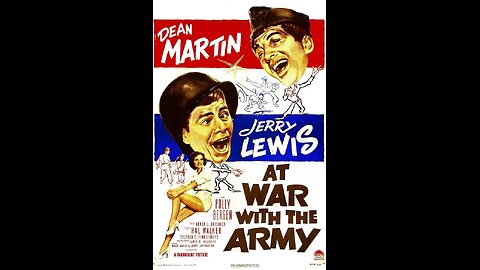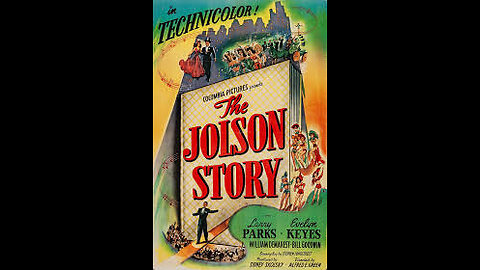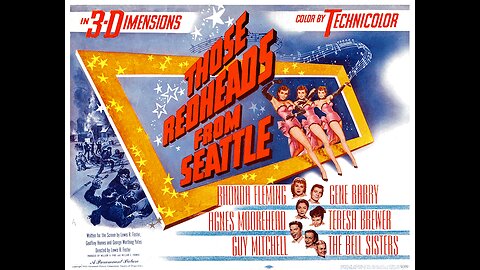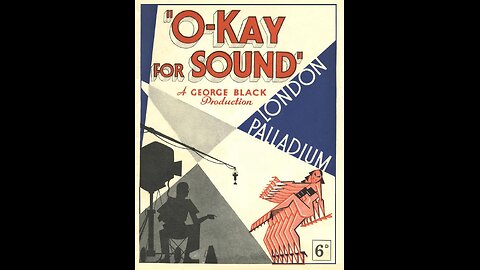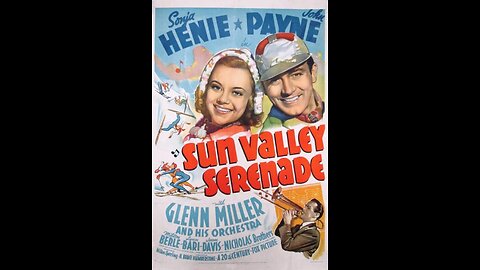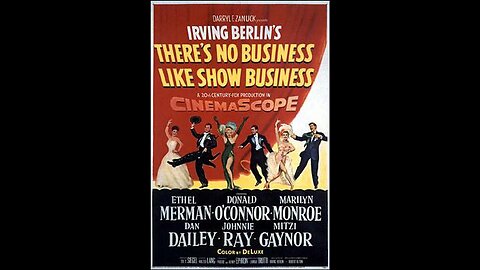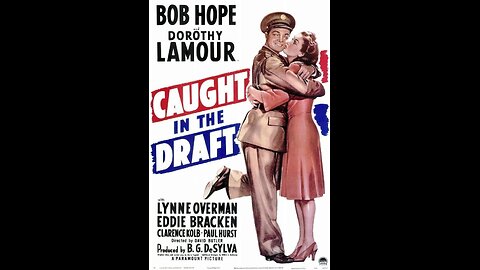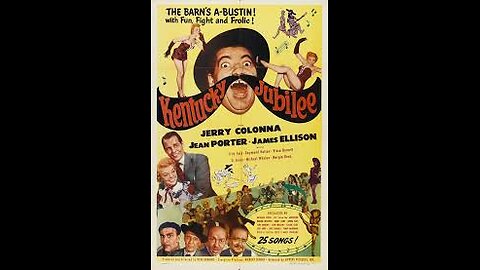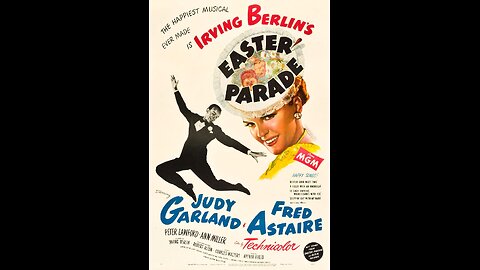
Musical Classics
43 videos
Updated 3 days ago
The Best Musicals from the Classic Era
-
Easter Parade (1948) | Directed by Charles Walters
 Classic Films & Movies ArchiveEaster Parade is a vibrant musical set around the holiday traditions of early 20th-century New York. The story follows Don Hewes, a Broadway star who is left without a dance partner when his longtime partner leaves him for another career opportunity. Determined to prove he can make any dancer a star, he picks a chorus girl, Hannah Brown, and trains her for the stage. Through their journey of rehearsals, performances, and romantic entanglements, the two discover both professional success and personal affection. Genre: Musical, Romance, Comedy Director: Charles Walters Charles Walters was an American director and choreographer best known for his work on MGM musicals during Hollywood’s Golden Age. Originally a dancer on Broadway and in films, Walters transitioned to directing and became known for his light touch, ability to stage intricate dance numbers, and bringing warmth and charm to his projects. His other notable works include Lili (1953), Dangerous When Wet (1953), and High Society (1956). Walters had a talent for working with major stars and crafting musicals that combined strong storytelling with dazzling production numbers. Star Cast: - Judy Garland as Hannah Brown - Fred Astaire as Don Hewes - Peter Lawford as Jonathan Harrow III - Ann Miller as Nadine Hale - Jules Munshin as François - Clinton Sundberg as Mike the Bartender - Richard Beavers as Vance - Johnny Green and His Orchestra Easter Parade was a major critical and commercial success upon its release. Audiences loved the pairing of Fred Astaire and Judy Garland, and the film became the highest-grossing musical of 1948. Critics praised the film’s lush Technicolor presentation, memorable Irving Berlin songs, and the chemistry between the two leads. Fred Astaire’s return to film after a brief retirement added additional buzz to the film’s popularity. Fun Facts: - Easter Parade marked Fred Astaire’s comeback after initially retiring from film dancing two years earlier. He replaced Gene Kelly, who was originally cast but broke his ankle before shooting began. - The movie features classic Irving Berlin songs, including "Steppin' Out with My Baby" and "Shakin' the Blues Away." - Judy Garland was at the height of her career, and her charm and comedic timing were major highlights of the film. - Ann Miller’s dazzling tap dance performance of "Shakin' the Blues Away" became one of her signature moments on film. - The title and several scenes were inspired by New York City’s famous Easter Parade along Fifth Avenue. * This Rumble Movie Channel is comprehensively indexed on https://kinoquick.com - find you favourite movies fast & free! * Follow this channel to be notified of daily movie updates.140 views
Classic Films & Movies ArchiveEaster Parade is a vibrant musical set around the holiday traditions of early 20th-century New York. The story follows Don Hewes, a Broadway star who is left without a dance partner when his longtime partner leaves him for another career opportunity. Determined to prove he can make any dancer a star, he picks a chorus girl, Hannah Brown, and trains her for the stage. Through their journey of rehearsals, performances, and romantic entanglements, the two discover both professional success and personal affection. Genre: Musical, Romance, Comedy Director: Charles Walters Charles Walters was an American director and choreographer best known for his work on MGM musicals during Hollywood’s Golden Age. Originally a dancer on Broadway and in films, Walters transitioned to directing and became known for his light touch, ability to stage intricate dance numbers, and bringing warmth and charm to his projects. His other notable works include Lili (1953), Dangerous When Wet (1953), and High Society (1956). Walters had a talent for working with major stars and crafting musicals that combined strong storytelling with dazzling production numbers. Star Cast: - Judy Garland as Hannah Brown - Fred Astaire as Don Hewes - Peter Lawford as Jonathan Harrow III - Ann Miller as Nadine Hale - Jules Munshin as François - Clinton Sundberg as Mike the Bartender - Richard Beavers as Vance - Johnny Green and His Orchestra Easter Parade was a major critical and commercial success upon its release. Audiences loved the pairing of Fred Astaire and Judy Garland, and the film became the highest-grossing musical of 1948. Critics praised the film’s lush Technicolor presentation, memorable Irving Berlin songs, and the chemistry between the two leads. Fred Astaire’s return to film after a brief retirement added additional buzz to the film’s popularity. Fun Facts: - Easter Parade marked Fred Astaire’s comeback after initially retiring from film dancing two years earlier. He replaced Gene Kelly, who was originally cast but broke his ankle before shooting began. - The movie features classic Irving Berlin songs, including "Steppin' Out with My Baby" and "Shakin' the Blues Away." - Judy Garland was at the height of her career, and her charm and comedic timing were major highlights of the film. - Ann Miller’s dazzling tap dance performance of "Shakin' the Blues Away" became one of her signature moments on film. - The title and several scenes were inspired by New York City’s famous Easter Parade along Fifth Avenue. * This Rumble Movie Channel is comprehensively indexed on https://kinoquick.com - find you favourite movies fast & free! * Follow this channel to be notified of daily movie updates.140 views -
At War with the Army (1950) | Directed by Hal Walker
 Classic Films & Movies ArchiveAt War with the Army is a military comedy set during World War II, featuring the antics of two soldiers stationed at an Army training camp in Kentucky. The story follows the misadventures of the bumbling Private First Class Alvin Korwin and his smooth-talking former nightclub partner, Sergeant Vic Puccinelli. While Korwin struggles with basic training and hopes to get a pass to see his wife and new baby, Vic tries to avoid responsibility and romance complications. Their escapades lead to a series of humorous misunderstandings, mishaps, and musical moments. Genre: Comedy, Musical, Military Director: Hal Walker Hal Walker was an American film director and assistant director best known for his work on comedies during the 1940s and 1950s. Born in 1896, Walker began as an assistant director before moving into full directorial roles, often working with well-known comedy teams. He directed several of the early films featuring Dean Martin and Jerry Lewis, including At War with the Army and Sailor Beware. His style was lighthearted and fast-paced, emphasizing slapstick and musical elements popular with post-war audiences. Star Cast: - Dean Martin as Sergeant Vic Puccinelli - Jerry Lewis as Private First Class Alvin Korwin - Mike Kellin as Sergeant McVey - Polly Bergen as Helen - Jean Ruth as Millie - Jimmie Dundee as Cpl. Wilson At War with the Army was the first official starring vehicle for the comedy duo of Dean Martin and Jerry Lewis, marking their transition from nightclub performers and radio personalities to major film stars. The film was well received by audiences, particularly fans of the duo’s brand of slapstick humor and musical banter. While not a critical darling, it established their box office appeal and led to a string of successful collaborations. Today, the film is appreciated as a nostalgic look at the early days of one of America’s most beloved comedy partnerships. Fun Facts: - At War with the Army was the first film where Martin and Lewis received top billing as a duo. - The film was based on a stage play of the same name written by James B. Allardice. - Dean Martin performs several musical numbers in the film, showcasing his crooner style that would later define his solo career. - Jerry Lewis contributed to some of the film’s comedic routines and gags, setting the tone for his later influence as both a performer and filmmaker. * This Rumble Movie Channel is comprehensively indexed on https://kinoquick.com - find you favourite movies fast & free! * Follow this channel to be notified of daily movie updates.241 views
Classic Films & Movies ArchiveAt War with the Army is a military comedy set during World War II, featuring the antics of two soldiers stationed at an Army training camp in Kentucky. The story follows the misadventures of the bumbling Private First Class Alvin Korwin and his smooth-talking former nightclub partner, Sergeant Vic Puccinelli. While Korwin struggles with basic training and hopes to get a pass to see his wife and new baby, Vic tries to avoid responsibility and romance complications. Their escapades lead to a series of humorous misunderstandings, mishaps, and musical moments. Genre: Comedy, Musical, Military Director: Hal Walker Hal Walker was an American film director and assistant director best known for his work on comedies during the 1940s and 1950s. Born in 1896, Walker began as an assistant director before moving into full directorial roles, often working with well-known comedy teams. He directed several of the early films featuring Dean Martin and Jerry Lewis, including At War with the Army and Sailor Beware. His style was lighthearted and fast-paced, emphasizing slapstick and musical elements popular with post-war audiences. Star Cast: - Dean Martin as Sergeant Vic Puccinelli - Jerry Lewis as Private First Class Alvin Korwin - Mike Kellin as Sergeant McVey - Polly Bergen as Helen - Jean Ruth as Millie - Jimmie Dundee as Cpl. Wilson At War with the Army was the first official starring vehicle for the comedy duo of Dean Martin and Jerry Lewis, marking their transition from nightclub performers and radio personalities to major film stars. The film was well received by audiences, particularly fans of the duo’s brand of slapstick humor and musical banter. While not a critical darling, it established their box office appeal and led to a string of successful collaborations. Today, the film is appreciated as a nostalgic look at the early days of one of America’s most beloved comedy partnerships. Fun Facts: - At War with the Army was the first film where Martin and Lewis received top billing as a duo. - The film was based on a stage play of the same name written by James B. Allardice. - Dean Martin performs several musical numbers in the film, showcasing his crooner style that would later define his solo career. - Jerry Lewis contributed to some of the film’s comedic routines and gags, setting the tone for his later influence as both a performer and filmmaker. * This Rumble Movie Channel is comprehensively indexed on https://kinoquick.com - find you favourite movies fast & free! * Follow this channel to be notified of daily movie updates.241 views -
The Jolson Story (1946) | Directed by Alfred E. Green
 Classic Films & Movies ArchiveThe Jolson Story is a biographical musical film depicting the rise to fame of legendary entertainer Al Jolson. The movie follows his journey from his early days as a cantor’s son to becoming one of the most celebrated performers of his time. Featuring elaborate musical numbers and a dramatic retelling of Jolson’s career, the film showcases his struggles, triumphs, and personal sacrifices in pursuit of success. Genre: Musical, Biographical, Drama Director: Alfred E. Green Alfred E. Green was an American film director known for his work during Hollywood’s Golden Age. Born in 1889, he directed over 100 films spanning silent cinema to talkies. His career included a variety of genres, from musicals and dramas to crime films and comedies. Green is best remembered for films like The Jolson Story and Baby Face (1933), a groundbreaking pre-Code drama. He continued directing into the 1950s before retiring. Star Cast: - Larry Parks as Al Jolson - Evelyn Keyes as Julie Benson - William Demarest as Steve Martin - Ludwig Donath as Cantor Yoelson - Tamara Shayne as Mrs. Yoelson - Scotty Beckett as Young Asa Yoelson - Bill Goodwin as Tom Baron The Jolson Story was a major box-office success and received widespread acclaim, particularly for its musical performances and Larry Parks’ portrayal of Al Jolson. Audiences were captivated by the film’s nostalgic celebration of classic show business, and Jolson’s own voice, which was dubbed over Parks’ performance, added authenticity. The movie was nominated for six Academy Awards, including Best Actor for Larry Parks, and won for Best Musical Scoring. Some modern critics view the film as a romanticized version of Jolson’s life, but it remains a beloved classic. Fun Facts: - Al Jolson provided the actual singing voice for Larry Parks in all of the musical numbers. - The film’s unexpected success led to a sequel, Jolson Sings Again (1949). - Larry Parks was nominated for an Academy Award for Best Actor, but his career suffered in the 1950s after he was blacklisted during the Red Scare. - The Jolson Story revitalized interest in Al Jolson’s music, bringing his classic hits back into the spotlight. - Some scenes in the film were shot on the Warner Bros. backlot, even though Columbia Pictures produced the movie. This Rumble Movie Channel is comprehensively indexed on https://kinoquick.com - find you favourite movies fast & free! Subscribe to this channel to be notified of daily movie updates.272 views
Classic Films & Movies ArchiveThe Jolson Story is a biographical musical film depicting the rise to fame of legendary entertainer Al Jolson. The movie follows his journey from his early days as a cantor’s son to becoming one of the most celebrated performers of his time. Featuring elaborate musical numbers and a dramatic retelling of Jolson’s career, the film showcases his struggles, triumphs, and personal sacrifices in pursuit of success. Genre: Musical, Biographical, Drama Director: Alfred E. Green Alfred E. Green was an American film director known for his work during Hollywood’s Golden Age. Born in 1889, he directed over 100 films spanning silent cinema to talkies. His career included a variety of genres, from musicals and dramas to crime films and comedies. Green is best remembered for films like The Jolson Story and Baby Face (1933), a groundbreaking pre-Code drama. He continued directing into the 1950s before retiring. Star Cast: - Larry Parks as Al Jolson - Evelyn Keyes as Julie Benson - William Demarest as Steve Martin - Ludwig Donath as Cantor Yoelson - Tamara Shayne as Mrs. Yoelson - Scotty Beckett as Young Asa Yoelson - Bill Goodwin as Tom Baron The Jolson Story was a major box-office success and received widespread acclaim, particularly for its musical performances and Larry Parks’ portrayal of Al Jolson. Audiences were captivated by the film’s nostalgic celebration of classic show business, and Jolson’s own voice, which was dubbed over Parks’ performance, added authenticity. The movie was nominated for six Academy Awards, including Best Actor for Larry Parks, and won for Best Musical Scoring. Some modern critics view the film as a romanticized version of Jolson’s life, but it remains a beloved classic. Fun Facts: - Al Jolson provided the actual singing voice for Larry Parks in all of the musical numbers. - The film’s unexpected success led to a sequel, Jolson Sings Again (1949). - Larry Parks was nominated for an Academy Award for Best Actor, but his career suffered in the 1950s after he was blacklisted during the Red Scare. - The Jolson Story revitalized interest in Al Jolson’s music, bringing his classic hits back into the spotlight. - Some scenes in the film were shot on the Warner Bros. backlot, even though Columbia Pictures produced the movie. This Rumble Movie Channel is comprehensively indexed on https://kinoquick.com - find you favourite movies fast & free! Subscribe to this channel to be notified of daily movie updates.272 views -
Those Redheads from Seattle (1953) | American musical film directed by Lewis R. Foster
 Classic Films & Movies Archive"Those Redheads from Seattle" is a 1953 American musical film directed by Lewis R. Foster. It is notable for being one of the first 3D musicals produced during the 1950s 3D film craze. Title: Those Redheads from Seattle (1953) Director: Lewis R. Foster Genre: Musical, Western Plot Summary: Set in the 19th century during the Klondike Gold Rush, the film follows the Carmichael family, consisting of four red-haired sisters. The sisters, Kay (Rhonda Fleming), Pat (Teresa Brewer), Barbara (Agnes Moorehead), and Betty (The Bell Sisters - Cynthia and Kay), arrive in Seattle seeking fortune and adventure. Upon their arrival, the sisters become involved in a series of misadventures, including romantic entanglements and the pursuit of gold. The plot takes an unexpected turn when the sisters' father is killed, leading them to uncover a mystery surrounding his death. Alongside the romantic subplot involving Kay and a handsome prospector (Gene Barry), the film weaves in musical performances, showcasing the singing talents of Teresa Brewer and The Bell Sisters. As the sisters navigate the challenges of the rugged frontier, the film combines elements of musical entertainment with a Western setting, creating a unique cinematic experience for audiences of the time. Key Elements: 1. 3D Innovation: "Those Redheads from Seattle" is notable for being one of the early 3D musicals, taking advantage of the 3D film technology trend of the 1950s. 2. Musical Numbers: The film features musical performances, with Teresa Brewer and The Bell Sisters contributing to the soundtrack. 3. Romantic Subplot: The romantic storyline involving Kay Carmichael and the prospector adds a layer of drama and sentiment to the film. 4. Gold Rush Setting: Set against the backdrop of the Klondike Gold Rush, the film captures the spirit of the frontier and the pursuit of wealth in the rugged Alaskan wilderness. 5. Family Dynamics: The narrative explores the relationships and dynamics within the Carmichael family as they face challenges and unravel the mystery surrounding their father's death. Legacy: "Those Redheads from Seattle" is remembered for its innovative use of 3D technology in the musical genre and its contribution to the entertainment landscape of the 1950s. It provides a snapshot of the cinematic trends and storytelling styles of its time, blending musical elements with the popular Western theme. Please note that the description is based on historical information about the film, and individual viewing experiences may vary.251 views
Classic Films & Movies Archive"Those Redheads from Seattle" is a 1953 American musical film directed by Lewis R. Foster. It is notable for being one of the first 3D musicals produced during the 1950s 3D film craze. Title: Those Redheads from Seattle (1953) Director: Lewis R. Foster Genre: Musical, Western Plot Summary: Set in the 19th century during the Klondike Gold Rush, the film follows the Carmichael family, consisting of four red-haired sisters. The sisters, Kay (Rhonda Fleming), Pat (Teresa Brewer), Barbara (Agnes Moorehead), and Betty (The Bell Sisters - Cynthia and Kay), arrive in Seattle seeking fortune and adventure. Upon their arrival, the sisters become involved in a series of misadventures, including romantic entanglements and the pursuit of gold. The plot takes an unexpected turn when the sisters' father is killed, leading them to uncover a mystery surrounding his death. Alongside the romantic subplot involving Kay and a handsome prospector (Gene Barry), the film weaves in musical performances, showcasing the singing talents of Teresa Brewer and The Bell Sisters. As the sisters navigate the challenges of the rugged frontier, the film combines elements of musical entertainment with a Western setting, creating a unique cinematic experience for audiences of the time. Key Elements: 1. 3D Innovation: "Those Redheads from Seattle" is notable for being one of the early 3D musicals, taking advantage of the 3D film technology trend of the 1950s. 2. Musical Numbers: The film features musical performances, with Teresa Brewer and The Bell Sisters contributing to the soundtrack. 3. Romantic Subplot: The romantic storyline involving Kay Carmichael and the prospector adds a layer of drama and sentiment to the film. 4. Gold Rush Setting: Set against the backdrop of the Klondike Gold Rush, the film captures the spirit of the frontier and the pursuit of wealth in the rugged Alaskan wilderness. 5. Family Dynamics: The narrative explores the relationships and dynamics within the Carmichael family as they face challenges and unravel the mystery surrounding their father's death. Legacy: "Those Redheads from Seattle" is remembered for its innovative use of 3D technology in the musical genre and its contribution to the entertainment landscape of the 1950s. It provides a snapshot of the cinematic trends and storytelling styles of its time, blending musical elements with the popular Western theme. Please note that the description is based on historical information about the film, and individual viewing experiences may vary.251 views -
O-Kay for Sound (1937) | British musical comedy directed by Marcel Varnel
 Classic Films & Movies Archive"O-Kay for Sound" is a British musical comedy film released in 1937, directed by Marcel Varnel. The movie is part of the "O-Kay for Sound" series produced by Associated Talking Pictures. It features the popular British comedy duo, Flanagan and Allen, consisting of Bud Flanagan and Chesney Allen. The film revolves around the misadventures of Bud and Ches, two hapless individuals who inadvertently become involved in the film industry. The plot begins with the duo mistakenly being hired as film extras, leading to a series of comical situations as they navigate the challenges of the movie business. Bud Flanagan and Chesney Allen's comedic talents are showcased through their interactions with the eccentric characters on set and their attempts to navigate the often chaotic world of filmmaking. The film incorporates musical numbers, reflecting the duo's background as a musical comedy act. The musical sequences feature lively performances and catchy tunes, adding to the overall entertainment value of the film. As Bud and Ches find themselves in increasingly absurd situations on the film set, "O-Kay for Sound" satirizes various aspects of the movie industry, poking fun at the filmmaking process, studio politics, and the glamorous image of Hollywood. The title "O-Kay for Sound" is a nod to the transition from silent films to "talkies," reflecting the era's excitement and challenges associated with the advent of sound in cinema. Directed by Marcel Varnel, known for his work on British comedy films, the movie combines physical comedy, witty dialogue, and musical performances to create a lighthearted and entertaining cinematic experience. It's worth noting that Flanagan and Allen were popular entertainers in the UK during the 1930s, and their films, including "O-Kay for Sound," contributed to their success and popularity. While "O-Kay for Sound" may not be as widely remembered today, it provides a snapshot of British comedy during the interwar period, capturing the humor and style of its time. The film's charm lies in the comedic chemistry of Flanagan and Allen, the satirical take on the film industry, and the inclusion of lively musical numbers.68 views 1 comment
Classic Films & Movies Archive"O-Kay for Sound" is a British musical comedy film released in 1937, directed by Marcel Varnel. The movie is part of the "O-Kay for Sound" series produced by Associated Talking Pictures. It features the popular British comedy duo, Flanagan and Allen, consisting of Bud Flanagan and Chesney Allen. The film revolves around the misadventures of Bud and Ches, two hapless individuals who inadvertently become involved in the film industry. The plot begins with the duo mistakenly being hired as film extras, leading to a series of comical situations as they navigate the challenges of the movie business. Bud Flanagan and Chesney Allen's comedic talents are showcased through their interactions with the eccentric characters on set and their attempts to navigate the often chaotic world of filmmaking. The film incorporates musical numbers, reflecting the duo's background as a musical comedy act. The musical sequences feature lively performances and catchy tunes, adding to the overall entertainment value of the film. As Bud and Ches find themselves in increasingly absurd situations on the film set, "O-Kay for Sound" satirizes various aspects of the movie industry, poking fun at the filmmaking process, studio politics, and the glamorous image of Hollywood. The title "O-Kay for Sound" is a nod to the transition from silent films to "talkies," reflecting the era's excitement and challenges associated with the advent of sound in cinema. Directed by Marcel Varnel, known for his work on British comedy films, the movie combines physical comedy, witty dialogue, and musical performances to create a lighthearted and entertaining cinematic experience. It's worth noting that Flanagan and Allen were popular entertainers in the UK during the 1930s, and their films, including "O-Kay for Sound," contributed to their success and popularity. While "O-Kay for Sound" may not be as widely remembered today, it provides a snapshot of British comedy during the interwar period, capturing the humor and style of its time. The film's charm lies in the comedic chemistry of Flanagan and Allen, the satirical take on the film industry, and the inclusion of lively musical numbers.68 views 1 comment -
Sun Valley Serenade (1941) | A classic musical film directed by H. Bruce Humberstone.
 Classic Films & Movies Archive"Sun Valley Serenade" is a classic musical film released in 1941, directed by H. Bruce Humberstone. The movie is known for its delightful combination of music, comedy, and romance. The film features an ensemble cast, including Sonja Henie, John Payne, Glenn Miller, Milton Berle, and Lynn Bari. Plot Summary: The story revolves around a Norwegian ice skater named Karen Benson, played by Sonja Henie, who is stranded in the United States along with her band manager, played by Milton Berle. They find themselves in Sun Valley, Idaho, where they encounter a struggling band led by Ted Scott, portrayed by John Payne. The band dreams of making it big and is working at the Sun Valley Lodge. In a twist of fate, Karen decides to join forces with the band, and their fortunes take an unexpected turn when they are invited to perform at the lodge. The film's plot thickens when Ted falls in love with Karen, creating a romantic subplot amid the musical and comedic elements. Musical Numbers: The musical performances in "Sun Valley Serenade" are a highlight of the film. The Glenn Miller Orchestra, featuring popular songs of the time, takes center stage. One of the most iconic musical moments is the performance of the hit song "Chattanooga Choo Choo," sung by Tex Beneke and The Modernaires. The song became a chart-topping success and is still remembered as one of the signature tunes of the Big Band era. Comedic Elements: Milton Berle contributes to the film's humor with his comedic timing and witty dialogue. His character adds levity to the storyline, providing a balance to the romance and musical aspects. Romance: The romantic subplot between Sonja Henie's Karen and John Payne's Ted adds a touch of sweetness to the film. Their on-screen chemistry is palpable, and the love story unfolds against the picturesque backdrop of Sun Valley. Cinematography and Setting: "Sun Valley Serenade" is visually captivating, making good use of the beautiful Sun Valley setting. The winter landscapes and the scenes featuring ice-skating performances contribute to the film's charm. The cinematography captures the grandeur of the lodge and the surrounding snow-covered mountains. Legacy: The film's success and enduring popularity are due in large part to its exceptional musical numbers and the star power of Glenn Miller. The soundtrack, featuring songs like "Chattanooga Choo Choo" and "Moonlight Serenade," became a significant part of the film's legacy. "Sun Valley Serenade" is a delightful combination of music, romance, and comedy, making it a beloved classic that continues to be enjoyed by audiences who appreciate the golden era of Hollywood musicals.180 views
Classic Films & Movies Archive"Sun Valley Serenade" is a classic musical film released in 1941, directed by H. Bruce Humberstone. The movie is known for its delightful combination of music, comedy, and romance. The film features an ensemble cast, including Sonja Henie, John Payne, Glenn Miller, Milton Berle, and Lynn Bari. Plot Summary: The story revolves around a Norwegian ice skater named Karen Benson, played by Sonja Henie, who is stranded in the United States along with her band manager, played by Milton Berle. They find themselves in Sun Valley, Idaho, where they encounter a struggling band led by Ted Scott, portrayed by John Payne. The band dreams of making it big and is working at the Sun Valley Lodge. In a twist of fate, Karen decides to join forces with the band, and their fortunes take an unexpected turn when they are invited to perform at the lodge. The film's plot thickens when Ted falls in love with Karen, creating a romantic subplot amid the musical and comedic elements. Musical Numbers: The musical performances in "Sun Valley Serenade" are a highlight of the film. The Glenn Miller Orchestra, featuring popular songs of the time, takes center stage. One of the most iconic musical moments is the performance of the hit song "Chattanooga Choo Choo," sung by Tex Beneke and The Modernaires. The song became a chart-topping success and is still remembered as one of the signature tunes of the Big Band era. Comedic Elements: Milton Berle contributes to the film's humor with his comedic timing and witty dialogue. His character adds levity to the storyline, providing a balance to the romance and musical aspects. Romance: The romantic subplot between Sonja Henie's Karen and John Payne's Ted adds a touch of sweetness to the film. Their on-screen chemistry is palpable, and the love story unfolds against the picturesque backdrop of Sun Valley. Cinematography and Setting: "Sun Valley Serenade" is visually captivating, making good use of the beautiful Sun Valley setting. The winter landscapes and the scenes featuring ice-skating performances contribute to the film's charm. The cinematography captures the grandeur of the lodge and the surrounding snow-covered mountains. Legacy: The film's success and enduring popularity are due in large part to its exceptional musical numbers and the star power of Glenn Miller. The soundtrack, featuring songs like "Chattanooga Choo Choo" and "Moonlight Serenade," became a significant part of the film's legacy. "Sun Valley Serenade" is a delightful combination of music, romance, and comedy, making it a beloved classic that continues to be enjoyed by audiences who appreciate the golden era of Hollywood musicals.180 views -
There's No Business Like Show Business (1954) | Directed by Walter Lang
 Classic Films & Movies Archive"There's No Business Like Show Business" is a 1954 American musical-comedy drama directed by Walter Lang. The film chronicles the lives of the Donahue family, a vaudeville performing troupe known as "The Five Donahues." As the children mature, they pursue individual paths, leading to personal and professional challenges that test their familial bonds and dedication to the stage. Genre: Musical / Comedy / Drama Director: Walter Lang Walter Lang (1896–1972) was an American film director prominent during Hollywood's Golden Age. He was known for his work on lavish musicals and comedies, collaborating frequently with 20th Century Fox. Lang's notable films include "The King and I" (1956) and "Call Me Madam" (1953), showcasing his adeptness at bringing theatrical productions to the silver screen. Star Cast: - Ethel Merman as Molly Donahue, the matriarch of the performing family. - Dan Dailey as Terence Donahue, Molly's husband and co-performer. - Donald O'Connor as Tim Donahue, their energetic son. - Mitzi Gaynor as Katy Donahue, their talented daughter. - Johnnie Ray as Steve Donahue, the eldest son with a passion for music. - Marilyn Monroe as Vicky Parker, a rising star who becomes entangled with the Donahue family. Upon its release, "There's No Business Like Show Business" received mixed reviews. While praised for its musical numbers and star-studded cast, some critics felt the plot was secondary to the performances. Over time, the film has been appreciated for its vibrant portrayal of show business and is noted for Marilyn Monroe's memorable performance of "Heat Wave." Fun Facts: 1. The film's title is derived from the song "There's No Business Like Show Business," originally from the Broadway musical "Annie Get Your Gun." 2. Marilyn Monroe was initially reluctant to take on the role of Vicky Parker, feeling it was not substantial enough. She agreed after being promised the lead in "The Seven Year Itch" (1955). 3. The movie was one of the first musicals filmed in CinemaScope, a widescreen format that enhanced its lavish production numbers. 4. Donald O'Connor considered this film one of his best works, highlighting the dynamic dance sequences and ensemble performances. 5. Despite its ensemble cast, Ethel Merman's powerful vocals and commanding presence often drew the most attention, reaffirming her status as a leading lady of musical theater. 🎬 Instantly Find Your Favorite Movies! This Rumble movie channel is fully indexed at 👉 https://kinoquick.com340 views
Classic Films & Movies Archive"There's No Business Like Show Business" is a 1954 American musical-comedy drama directed by Walter Lang. The film chronicles the lives of the Donahue family, a vaudeville performing troupe known as "The Five Donahues." As the children mature, they pursue individual paths, leading to personal and professional challenges that test their familial bonds and dedication to the stage. Genre: Musical / Comedy / Drama Director: Walter Lang Walter Lang (1896–1972) was an American film director prominent during Hollywood's Golden Age. He was known for his work on lavish musicals and comedies, collaborating frequently with 20th Century Fox. Lang's notable films include "The King and I" (1956) and "Call Me Madam" (1953), showcasing his adeptness at bringing theatrical productions to the silver screen. Star Cast: - Ethel Merman as Molly Donahue, the matriarch of the performing family. - Dan Dailey as Terence Donahue, Molly's husband and co-performer. - Donald O'Connor as Tim Donahue, their energetic son. - Mitzi Gaynor as Katy Donahue, their talented daughter. - Johnnie Ray as Steve Donahue, the eldest son with a passion for music. - Marilyn Monroe as Vicky Parker, a rising star who becomes entangled with the Donahue family. Upon its release, "There's No Business Like Show Business" received mixed reviews. While praised for its musical numbers and star-studded cast, some critics felt the plot was secondary to the performances. Over time, the film has been appreciated for its vibrant portrayal of show business and is noted for Marilyn Monroe's memorable performance of "Heat Wave." Fun Facts: 1. The film's title is derived from the song "There's No Business Like Show Business," originally from the Broadway musical "Annie Get Your Gun." 2. Marilyn Monroe was initially reluctant to take on the role of Vicky Parker, feeling it was not substantial enough. She agreed after being promised the lead in "The Seven Year Itch" (1955). 3. The movie was one of the first musicals filmed in CinemaScope, a widescreen format that enhanced its lavish production numbers. 4. Donald O'Connor considered this film one of his best works, highlighting the dynamic dance sequences and ensemble performances. 5. Despite its ensemble cast, Ethel Merman's powerful vocals and commanding presence often drew the most attention, reaffirming her status as a leading lady of musical theater. 🎬 Instantly Find Your Favorite Movies! This Rumble movie channel is fully indexed at 👉 https://kinoquick.com340 views -
In the Good Old Summertime (1949) | American musical romantic comedy directed by Robert Z. Leonard
 Classic Films & Movies Archive"In the Good Old Summertime" is a 1949 American musical romantic comedy film directed by Robert Z. Leonard. The film is a musical adaptation of the 1940 film "The Shop Around the Corner," and both films share the same source material, the play "Parfumerie" by Miklós László. The story is set in Chicago during the turn of the 20th century. Andrew Larkin, played by Van Johnson, is a mild-mannered and earnest employee at Oberkugen's music store. The store is a lively place, bustling with activity, and the film captures the spirit of the era. The plot revolves around the budding romance between Andrew and his co-worker, Veronica Fisher, portrayed by Judy Garland. Unbeknownst to both of them, they have been corresponding through anonymous love letters and are developing feelings for each other. The letters are exchanged through a classified ad in a local newspaper. Complications arise when Andrew discovers that his pen pal is none other than Veronica, his colleague with whom he often clashes in person. The film plays on the irony and humor of their situation, as the two are unaware of the identity of their secret admirers even as they work side by side. As the characters navigate their relationships, the film is punctuated by musical interludes, featuring songs such as the title track, "In the Good Old Summertime," and other nostalgic tunes of the era. The supporting cast includes characters like Mr. Oberkugen, the store owner played by S.Z. Sakall, who provides comic relief, and Marjorie Main as Andrew's aunt. The film captures the charm of a bygone era, depicting the idyllic days of summer and the innocence of romance in a simpler time. The narrative unfolds against the backdrop of the lively music store, filled with the sounds of sheet music, instruments, and the harmonies of the characters. Judy Garland (Veronica Fisher): Garland brings her signature warmth and musical talent to the role, infusing the character with charm. Van Johnson (Andrew Larkin): Johnson portrays the earnest and sometimes awkward Andrew with a mix of sincerity and humor. While not as well-remembered as the earlier versions of the story, "In the Good Old Summertime" is appreciated for its nostalgic charm, musical numbers, and the delightful chemistry between Judy Garland and Van Johnson. The film remains a classic example of the Hollywood musical genre, capturing the essence of romance and comedy against the backdrop of a bygone era.246 views
Classic Films & Movies Archive"In the Good Old Summertime" is a 1949 American musical romantic comedy film directed by Robert Z. Leonard. The film is a musical adaptation of the 1940 film "The Shop Around the Corner," and both films share the same source material, the play "Parfumerie" by Miklós László. The story is set in Chicago during the turn of the 20th century. Andrew Larkin, played by Van Johnson, is a mild-mannered and earnest employee at Oberkugen's music store. The store is a lively place, bustling with activity, and the film captures the spirit of the era. The plot revolves around the budding romance between Andrew and his co-worker, Veronica Fisher, portrayed by Judy Garland. Unbeknownst to both of them, they have been corresponding through anonymous love letters and are developing feelings for each other. The letters are exchanged through a classified ad in a local newspaper. Complications arise when Andrew discovers that his pen pal is none other than Veronica, his colleague with whom he often clashes in person. The film plays on the irony and humor of their situation, as the two are unaware of the identity of their secret admirers even as they work side by side. As the characters navigate their relationships, the film is punctuated by musical interludes, featuring songs such as the title track, "In the Good Old Summertime," and other nostalgic tunes of the era. The supporting cast includes characters like Mr. Oberkugen, the store owner played by S.Z. Sakall, who provides comic relief, and Marjorie Main as Andrew's aunt. The film captures the charm of a bygone era, depicting the idyllic days of summer and the innocence of romance in a simpler time. The narrative unfolds against the backdrop of the lively music store, filled with the sounds of sheet music, instruments, and the harmonies of the characters. Judy Garland (Veronica Fisher): Garland brings her signature warmth and musical talent to the role, infusing the character with charm. Van Johnson (Andrew Larkin): Johnson portrays the earnest and sometimes awkward Andrew with a mix of sincerity and humor. While not as well-remembered as the earlier versions of the story, "In the Good Old Summertime" is appreciated for its nostalgic charm, musical numbers, and the delightful chemistry between Judy Garland and Van Johnson. The film remains a classic example of the Hollywood musical genre, capturing the essence of romance and comedy against the backdrop of a bygone era.246 views -
Caught in the Draft (1941) | American musical comedy film directed by David Butler
 Classic Films & Movies Archive"Caught in the Draft" is a 1941 American musical comedy film directed by David Butler. Starring Bob Hope, Dorothy Lamour, and Lynne Overman, the film is a lighthearted comedy set against the backdrop of military service during World War II. The film follows the comedic misadventures of Don Bolton, played by Bob Hope, a movie star who becomes unintentionally entangled in the military draft. Don is a self-absorbed and carefree Hollywood personality who finds himself facing the prospect of compulsory military service during World War II. Desperate to avoid being drafted, Don hatches a scheme to be mistaken for a navy man by impersonating a sailor. However, his plan goes awry when he is mistakenly identified as a naval aviation cadet and is enlisted in the U.S. Navy. As Don tries to cope with military life, he encounters a tough and no-nonsense drill instructor, Sergeant McGowan, played by Lynne Overman. Meanwhile, Dorothy Lamour plays Antoinette "Tony" Fairbanks, a naval nurse who becomes romantically involved with Don. The romantic subplot adds a layer of charm and humor to the film. The comedic situations intensify as Don, unaccustomed to the discipline of military life, creates chaos in various training exercises. His bumbling antics and attempts to avoid military duty lead to a series of humorous and slapstick moments. The film incorporates musical numbers, including performances by Dorothy Lamour, and showcases Bob Hope's signature wit and comedic timing. The blend of comedy, romance, and musical elements was a popular formula during the era. Amidst the humor, the film also captures the patriotic spirit of the time, with characters embracing their roles in the war effort. The screenplay cleverly satirizes Hollywood celebrities and their interactions with the military, highlighting the contrast between the glamorous world of showbiz and the disciplined environment of military service. Bob Hope (Don Bolton): Hope delivers his trademark comedic performance, portraying the hapless and reluctant draftee with his characteristic wit. Dorothy Lamour (Antoinette "Tony" Fairbanks): Lamour adds glamour and musical talent to the film, playing the romantic interest of Bob Hope's character. Lynne Overman (Sergeant McGowan): Overman provides comic relief as the tough drill instructor who has to deal with the antics of the Hollywood star. "Caught in the Draft" is a representative example of the wartime comedies produced during the 1940s. Bob Hope's comedic style, combined with the film's blend of humor, romance, and music, made it a popular and entertaining release during a time when audiences sought light-hearted entertainment amidst the challenges of war.254 views
Classic Films & Movies Archive"Caught in the Draft" is a 1941 American musical comedy film directed by David Butler. Starring Bob Hope, Dorothy Lamour, and Lynne Overman, the film is a lighthearted comedy set against the backdrop of military service during World War II. The film follows the comedic misadventures of Don Bolton, played by Bob Hope, a movie star who becomes unintentionally entangled in the military draft. Don is a self-absorbed and carefree Hollywood personality who finds himself facing the prospect of compulsory military service during World War II. Desperate to avoid being drafted, Don hatches a scheme to be mistaken for a navy man by impersonating a sailor. However, his plan goes awry when he is mistakenly identified as a naval aviation cadet and is enlisted in the U.S. Navy. As Don tries to cope with military life, he encounters a tough and no-nonsense drill instructor, Sergeant McGowan, played by Lynne Overman. Meanwhile, Dorothy Lamour plays Antoinette "Tony" Fairbanks, a naval nurse who becomes romantically involved with Don. The romantic subplot adds a layer of charm and humor to the film. The comedic situations intensify as Don, unaccustomed to the discipline of military life, creates chaos in various training exercises. His bumbling antics and attempts to avoid military duty lead to a series of humorous and slapstick moments. The film incorporates musical numbers, including performances by Dorothy Lamour, and showcases Bob Hope's signature wit and comedic timing. The blend of comedy, romance, and musical elements was a popular formula during the era. Amidst the humor, the film also captures the patriotic spirit of the time, with characters embracing their roles in the war effort. The screenplay cleverly satirizes Hollywood celebrities and their interactions with the military, highlighting the contrast between the glamorous world of showbiz and the disciplined environment of military service. Bob Hope (Don Bolton): Hope delivers his trademark comedic performance, portraying the hapless and reluctant draftee with his characteristic wit. Dorothy Lamour (Antoinette "Tony" Fairbanks): Lamour adds glamour and musical talent to the film, playing the romantic interest of Bob Hope's character. Lynne Overman (Sergeant McGowan): Overman provides comic relief as the tough drill instructor who has to deal with the antics of the Hollywood star. "Caught in the Draft" is a representative example of the wartime comedies produced during the 1940s. Bob Hope's comedic style, combined with the film's blend of humor, romance, and music, made it a popular and entertaining release during a time when audiences sought light-hearted entertainment amidst the challenges of war.254 views -
Kentucky Jubilee (1951) | Directed by Ron Ormond
 Classic Films & Movies ArchiveKentucky Jubilee is a musical comedy with elements of mystery, set in a small Southern town known for its annual country fair and talent show. The story follows a group of entertainers and a visiting reporter who find themselves entangled in a bizarre crime when a prominent citizen is kidnapped. As they navigate quirky townsfolk, musical performances, and comedic mishaps, the characters must uncover the truth while ensuring the jubilee goes on as planned. The film blends country-style humor with lively musical numbers, capturing the charm of early 1950s rural America. Genre: Musical, Comedy, Mystery Director: Ron Ormond Ron Ormond was a filmmaker known for his work in low-budget Westerns, exploitation films, and later, religious cinema. With a career spanning from the 1940s to the 1970s, he specialized in quickly produced, crowd-pleasing films that often featured country music stars and action-packed plots. His ability to blend humor, music, and suspense made him a staple in independent filmmaking, though his work was often regarded as campy by modern audiences. Star Cast: - Jerry Collona as Jerry Harris - Jean Porter as Gloria Pelley - James Ellison as Jeff Benson - Zeba Ray as Lulubelle - Chill Wills as Sheriff Horne Kentucky Jubilee was received as lighthearted entertainment, particularly appealing to fans of country music and Southern comedy. Critics noted its simplistic plot and low-budget production values but acknowledged its appeal to audiences who enjoyed rural-themed musicals. The presence of well-known character actors like Jerry Collona and Chill Wills added to the film’s comedic charm. Though not a major hit, it found an audience among fans of small-town Americana films and live-performance showcases. Over time, it has become a nostalgic relic of mid-century musical comedy. Fun Facts: - The film prominently features real country music acts, making it a showcase for emerging talent in the 1950s. - Jerry Collona, known for his comedic persona and exaggerated expressions, brought his signature humor to the film, making it one of the more memorable aspects. - Chill Wills, a veteran character actor, was well-known for playing Western and Southern authority figures, adding a familiar presence to the cast. - The movie’s title references the real-life tradition of state fairs and talent showcases that were popular in mid-century America. - Kentucky Jubilee was one of several films of the era that combined musical performances with light mystery elements, a trend common in lower-budget productions. 🎬 Instantly Find Your Favorite Movies! This Rumble movie channel is fully indexed at 👉 https://kinoquick.com287 views
Classic Films & Movies ArchiveKentucky Jubilee is a musical comedy with elements of mystery, set in a small Southern town known for its annual country fair and talent show. The story follows a group of entertainers and a visiting reporter who find themselves entangled in a bizarre crime when a prominent citizen is kidnapped. As they navigate quirky townsfolk, musical performances, and comedic mishaps, the characters must uncover the truth while ensuring the jubilee goes on as planned. The film blends country-style humor with lively musical numbers, capturing the charm of early 1950s rural America. Genre: Musical, Comedy, Mystery Director: Ron Ormond Ron Ormond was a filmmaker known for his work in low-budget Westerns, exploitation films, and later, religious cinema. With a career spanning from the 1940s to the 1970s, he specialized in quickly produced, crowd-pleasing films that often featured country music stars and action-packed plots. His ability to blend humor, music, and suspense made him a staple in independent filmmaking, though his work was often regarded as campy by modern audiences. Star Cast: - Jerry Collona as Jerry Harris - Jean Porter as Gloria Pelley - James Ellison as Jeff Benson - Zeba Ray as Lulubelle - Chill Wills as Sheriff Horne Kentucky Jubilee was received as lighthearted entertainment, particularly appealing to fans of country music and Southern comedy. Critics noted its simplistic plot and low-budget production values but acknowledged its appeal to audiences who enjoyed rural-themed musicals. The presence of well-known character actors like Jerry Collona and Chill Wills added to the film’s comedic charm. Though not a major hit, it found an audience among fans of small-town Americana films and live-performance showcases. Over time, it has become a nostalgic relic of mid-century musical comedy. Fun Facts: - The film prominently features real country music acts, making it a showcase for emerging talent in the 1950s. - Jerry Collona, known for his comedic persona and exaggerated expressions, brought his signature humor to the film, making it one of the more memorable aspects. - Chill Wills, a veteran character actor, was well-known for playing Western and Southern authority figures, adding a familiar presence to the cast. - The movie’s title references the real-life tradition of state fairs and talent showcases that were popular in mid-century America. - Kentucky Jubilee was one of several films of the era that combined musical performances with light mystery elements, a trend common in lower-budget productions. 🎬 Instantly Find Your Favorite Movies! This Rumble movie channel is fully indexed at 👉 https://kinoquick.com287 views
